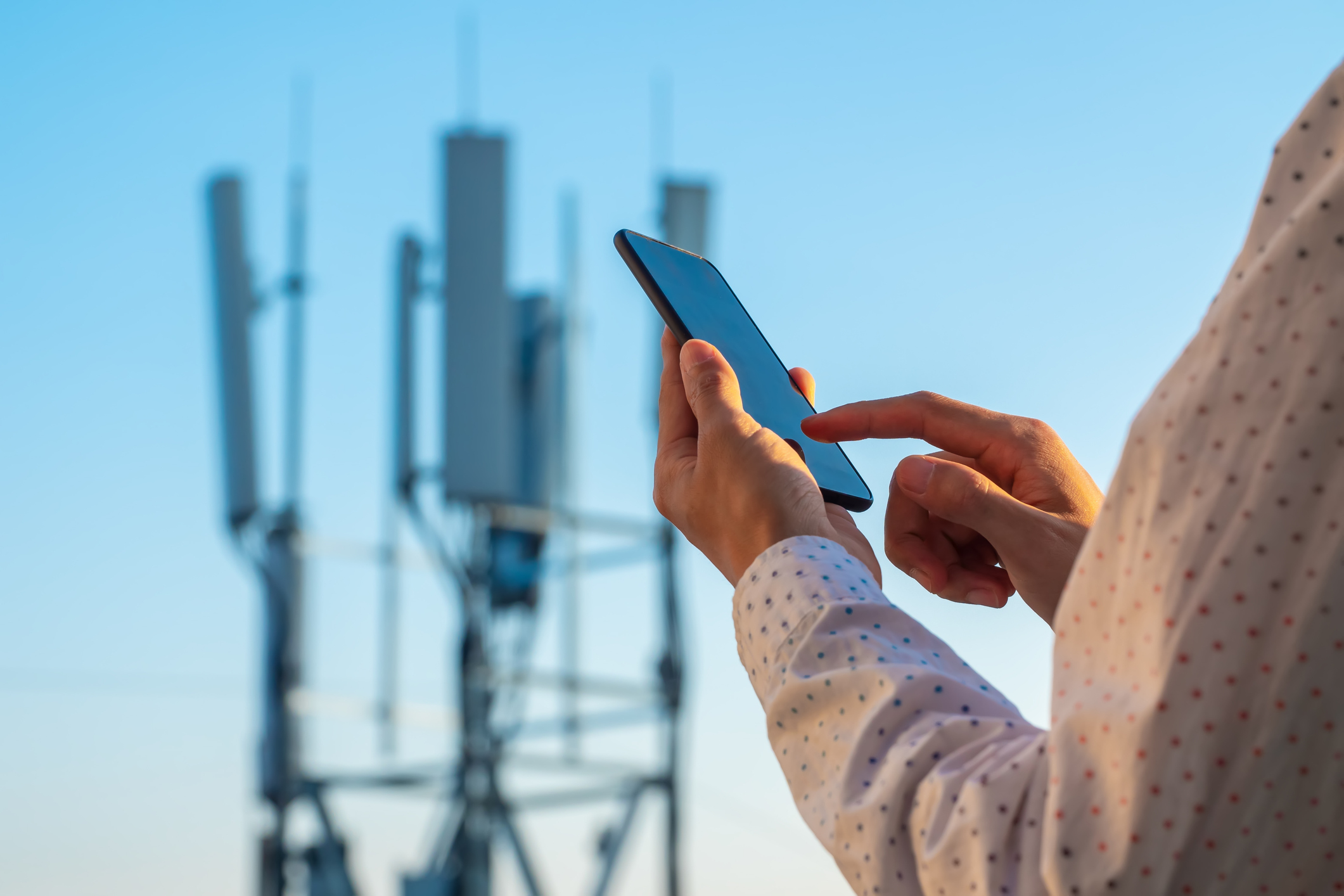

5G communications tower with man using mobile phone
Fixed Wireless Access and why it is different from Mobile Broadband
With so many Fixed Wireless Access (FWA) service offerings hitting the market as a viable internet solution for businesses, many are still confused on what it is and how it works. Some are using the term FWA and Mobile Broadband as the same, when actually they are quite different. Let’s explore and recount a bit about how accessing the internet through a mobile device has changed over the years.
History of Mobile Broadband
Mobile Broadband has been around for quite some time, and is what most people are accustomed to when we talk about using internet over a mobile connection. Mobile Broadband came onto the scene in the mid 2000’s, as the technology was shifting from 2G to 3G and as 3G coverage was becoming more widespread. The ability to plug in a device to laptops through a USB port and access mobile internet through a “dongle” became very popular and created our ability to access the internet “on the go”.
Some of the earliest versions of these dongles included an actual antennae attached to them and looked somewhat like a credit card sticking out of your computer. Eventually the hardware changed, became very sleek and small and started to resemble a USB device.
Manufacturers also began to embed the mobile function directly into the computers and 3G-enabled devices like netbooks were born which allowed even greater portability. It wasn’t before long and e-readers stormed the market at the beginning of 2010, with the Amazon Kindle and Barnes & Nobile’s Nook readers.
Apple joined in the mix and even though they announced the iPad in January of 2010, it wasn’t until later that year that consumers could purchase an iPad that was 3G-enabled or with cellular connectivity. (Interesting to note the iPad Air launched in November of 2013, which was essentially a marketing name and slight upgrade from the original iPad launched in 2010 that had both cellular and WiFi connections.)
In 2011 at the Consumer Electronics Show in Las Vegas, two new 4G-capable devices were introduced from Novatel. These new 4G mobile hotspots which connected to a cellular network, allowed multiple devices to connect to them to access mobile internet. The internet-in-your-pocket devices (MiFi’s) became extremely popular as they provided a secure connection and alternative to using public WiFi networks.
Fixed Wireless Access
For those who have experienced all of these technology changes, we all understand how this works, right? So now enter a new era of internet connectivity for consumers and businesses. One where the new technology along with 4G LTE or 5G allows for a viable alternative to wired broadband, one where we can literally “cut the cord” for our internet services.
To understand the differences of mobile broadband and Fixed Wireless Access (FWA), let’s briefly recap how FWA works. Remember FWA is a connection between two fixed locations using a radio or wireless link. The point-to-point link is used to provide broadband internet services and this wireless connection replaces “the last mile” or cabling that would normally be required for broadband internet. The tower that connects to a larger network may have wires and also radio links, but no wires are needed at a home or business, only a receiving device that is wireless is needed to work. For some of the 4G LTE or 5G FWA services, it may also require an antennae installed on the customer’s building, but the main thing to note is that unlike mobile broadband, it’s not portable. The wireless receiving device is fixed and stationary at your home or business, unlike with mobile broadband you carry it around in your pocket.
Differences of FWA and Mobile Broadband
FWA offers many advantages to mobile broadband in the following areas, reliability, and consistent speed. There are differences in price and set-up between the two technologies as well.
Driving the need to consider FWA as an integral part of your networking needs are dramatic price increases that will begin as early as August 2022. These increases relate to a 2010 order from the FCC that mandates all POTS (Plain Old Telephone Service) lines in the US be replaced with an alternative service by August 2, 2022. Major carriers have been dropping support for these copper-based lines as well as raising prices for POTS service dramatically – sometimes doubling or tripling. Are you willing to absorb these incremental costs?
Contact OVATION to learn more about FWA solutions and migration strategies that take advantage of FWA service offerings that keep you connected with a cost effective and reliable service. For twenty years, OVATION has been helping enterprises, both large and small, navigate wireless services offerings that keep businesses operating. Our team of wireless professionals bring years of best practices and thought leadership to the ever changing world of wireless.
It Still Works…Optimizing Cellular Phone Bills Strategies for Reducing Costs and Enhancing Efficiency …
AI-Driven Security in the Workplace With the increase in recent years of mobility in the…
From Acquisition to Retirement: The Comprehensive Cost of Managing Corporate Mobile DevicesHave you ever wondered…
OVATION Joins Verizon Partner Network as Select SubAgent Cornelius, NC, January 8, 2025/ / OVATION…
Future Forward: Key Mobile and Wireless Tech Trends to Watch in 2025 As we…
Cycling Through Challenges: A Managed Service Professional’s JourneyEmployee Blog Post- Matt Evans, SVP of Sales…